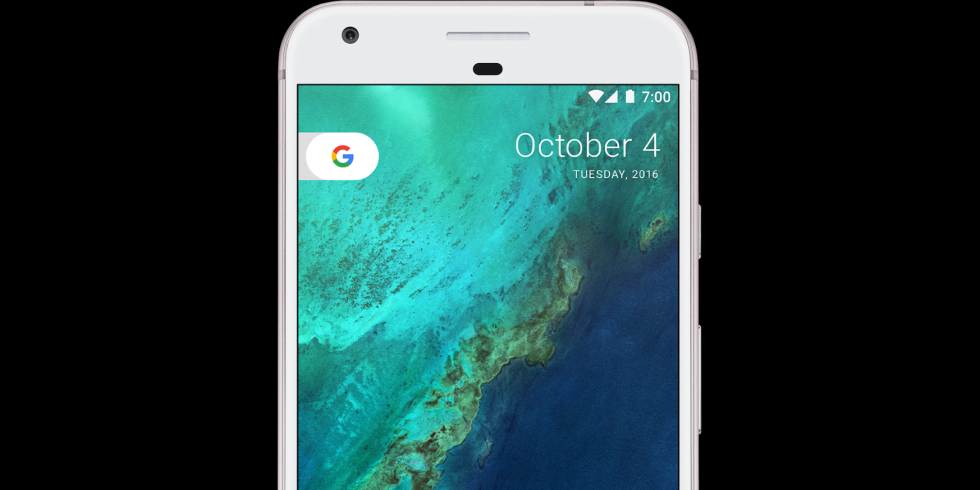

Today, Google announced the Pixel, the first fully Google-branded phone. It’s a subtle but bold statement about the future of how Google makes not only gadgets but also software. Still: It’s been nine years since Apple launched the iPhone. So what the hell took so long?
Android. While Apple has spent nearly a decade keeping a tight leash on all things iPhone, building both the software and the hardware, Google took a much different approach, allowing the likes of Samsung, LG, and Motorola to build phones that used Google’s OS.
Until now. So what changed?
THE PAST WAS PARTNERING UP
Google had good reason to take an opposite approach to Apple’s. For one thing, its decision helped everyone involved. Phone makers got a free operating system they didn’t have to make themselves. Google got to be on tons and tons of phones. The end result of this mutually beneficial relationship was that Android became the most used mobile platform in the entire world.
GOOGLE’S APPROACH CAME WITH A LAS VEGAS-SIZED BUFFET OF SETBACKS
This strategy worked for the early land-grab era of smartphone adoption, when Google and Apple fought to win over new smartphone users and lock those newbies into their ecosystems. But Google’s approach came with a Las Vegas-sized buffet of setbacks that have started to sting more and more in recent years.
The biggest problem is fragmentation. Because Google doesn’t make the phones that run its operating system, it doesn’t have control over many of the things that Apple does. When Google releases an Android update, for example, it’s the phone makers that tweak it for the hardware and push it out. Everything becomes a cooperative process, one that’s complicated and takes time. Companies messing with Android over the years has created an unruly messthat makes it nearly impossible for Google to have any resemblance of control.
Google reluctantly tolerated this annoyance. After all, these hardware partners were responsible for Android’s reach into every corner of the globe. But then the operating system had a crisis, and Android’s biggest flaw was laid bare.
In 2015, an Android bug named Stagefright made Google issue a much-needed patch. Because this update needed to navigate a maze of devices, it took months to resolve the situation. In the aftermath, Google, Samsung, and LG dedicated themselves to monthly security updates, but other phone makers like Motorola and HTC did not, creating yet another division among Android smartphones.
IT SEEMED AS IF GOOGLE EXECS WERE TRYING NOT TO MENTION THE WORD “ANDROID.”
When Google releases an Android update, it’s lucky if even 20 percent of its phones are running the latest build within a matter of months. By contrast, any iPhone that’s new enough to be running new software from Apple gets the update within a day of its release.
THE FUTURE IS GOING IT ALONE
During today’s event, it seemed as if Google execs were trying not to mention the word “Android.” There was one passing reference to Nougat 7.1, the latest Android build, and that was it. Hardly a mention of the A-word.
Something is going on at Mountain View, and there’s more evidence beyond a Google phone and a press conference snub to back it up. Almost a year ago, the Washington Post reportedthat Google was working on merging Android and Chrome OS, Google’s Chrome-based software for Chromebook laptops. Something that could supplant Android completely. Rumor has it that instead of being mobile-only, this new OS would be more like Microsoft’s Windows 10, software that breaks through device boundaries. Maybe it could even compete with Apple’s MacOS.
The rumors suggested this software, currently named Andromeda, was coming very soon, and might even be discussed at today’s Google event. It wasn’t. But you can still see Andromeda’s outline in the background.
Rewind for a moment to 2011, when Google appeared to make a big commitment to building its own phones by buying Motorola. Three years later (after mining many of Motorola’s patents), Google sold the company to Lenovo. Clearly all the pieces weren’t in place. Now, the arrival of Google’s Pixel phone suggests this new operating system could be what was missing.
Why? One thing that kept Google from making its own phone all those years was the fear of distancing itself from its own Android partners, the companies that make its phones. Instead, it opted a carousel approach, courting different companies every year who would pitch in to build Google’s Nexus phones, the precursor to Pixel.
But the Pixel—this is all Google. Technically, the struggling tech company HTC made this phone, but you won’t see those three letters anywhere on the device. Instead, the small three words printed on the back of the phone—”Made by Google”—represent a huge shift. They should make everyone who’s making Android phones nervous. After all, Google took so long to step into the fray because it wasn’t ready to fight a war on all fronts against dozens of companies whose software ally has suddenly become their competition.
Now, it is. It’s not a move you do unless you have some big ideas in mind. We can’t quite see Google’s whole strategy yet, but we can see its pawns are in motion.
[Source:-PM]
